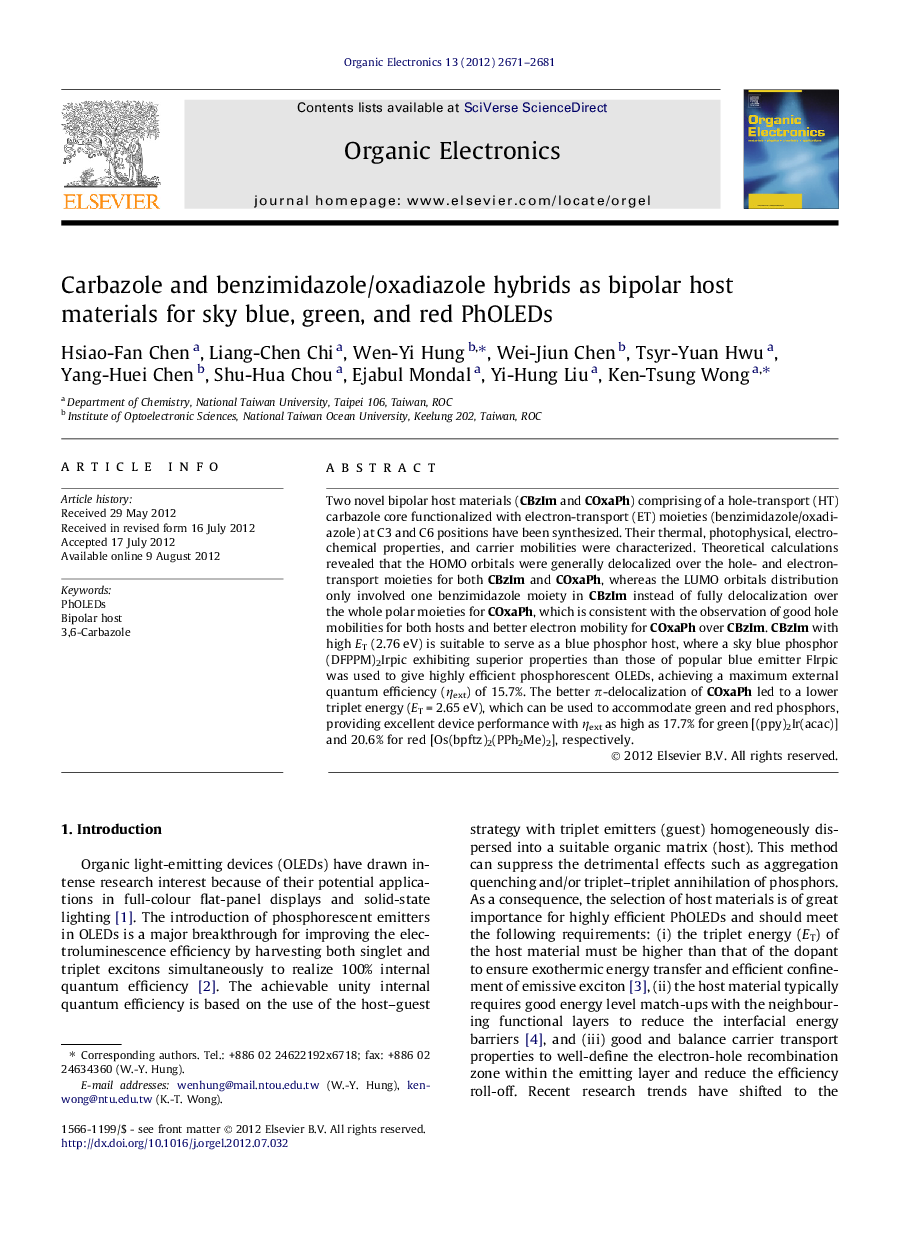| Article ID | Journal | Published Year | Pages | File Type |
|---|---|---|---|---|
| 1264057 | Organic Electronics | 2012 | 11 Pages |
Two novel bipolar host materials (CBzIm and COxaPh) comprising of a hole-transport (HT) carbazole core functionalized with electron-transport (ET) moieties (benzimidazole/oxadiazole) at C3 and C6 positions have been synthesized. Their thermal, photophysical, electrochemical properties, and carrier mobilities were characterized. Theoretical calculations revealed that the HOMO orbitals were generally delocalized over the hole- and electron-transport moieties for both CBzIm and COxaPh, whereas the LUMO orbitals distribution only involved one benzimidazole moiety in CBzIm instead of fully delocalization over the whole polar moieties for COxaPh, which is consistent with the observation of good hole mobilities for both hosts and better electron mobility for COxaPh over CBzIm. CBzIm with high ET (2.76 eV) is suitable to serve as a blue phosphor host, where a sky blue phosphor (DFPPM)2Irpic exhibiting superior properties than those of popular blue emitter FIrpic was used to give highly efficient phosphorescent OLEDs, achieving a maximum external quantum efficiency (ηext) of 15.7%. The better π-delocalization of COxaPh led to a lower triplet energy (ET = 2.65 eV), which can be used to accommodate green and red phosphors, providing excellent device performance with ηext as high as 17.7% for green [(ppy)2Ir(acac)] and 20.6% for red [Os(bpftz)2(PPh2Me)2], respectively.
Graphical abstractFigure optionsDownload full-size imageDownload as PowerPoint slideHighlights► Two bipolar hosts (CBzIm and COxaPh) comprising of carbazole and benzimidazole/oxadiazole. ► CBzIm with high ET is suitable to serve as a blue phosphor host. ► The better π-delocalization of COxaPh led to a lower ET to serve as green and red host.
